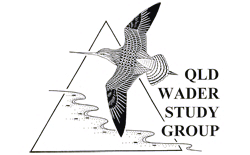Site information:
Amity is a small, coastal village at the very northern end of North Stradbroke Island. The narrow sandbank at the north-western end of the village remains exposed at high tide, providing one of the few high tide roost sites for waders in this part of the island. The spit is continually changing in size, shape and elevation.
To view the waders, walk slowly and quietly out onto the spit. Disturbance from boats, people and dogs is a problem and this site is best viewed out of the holiday season. Many thousands of waders and terns are sometimes present in summer. Bar-tailed Godwit, Grey-tailed Tattler and Crested Tern are usually very abundant, while Whimbrel, Eastern Curlew and Pied Oystercatcher are common. On rare occasions, Beach Stone-curlew is seen at this site. In autumn and winter, watch out for Double-banded Plover. However, this species is more reliably seen at Flinders Beach, less than 2 km to the east.
How to get there: To get to Amity Point, take either the water taxi or the barge from Cleveland to Dunwich. Amity Point is connected to Dunwich by East Coast Road, a sealed road suited to conventional vehicles. A regular bus service also runs between these two towns. About 5 km north of Dunwich, turn left into Beehive Road, then into Claytons Road. Drive through the township of Amity Point and at the end of Claytons Road is a caravan park. At the southern end of the caravan park, a path leads through a small stand of trees to the spit.
Flinders Beach is less than 1 km from the junction of Beehive Road and Claytons Road.
Site coordinates: Lat 27º 24’ 35” S, Long 153º 26’ 07” E.
Amenities/access: The nearest toilet and picnic facilities are located near the boat ramp at Catarita Park on Claytons Road. This site is not easily accessible for disabled people.
Wader species: Bar-tailed Godwit, Whimbrel, Eastern Curlew, Grey-tailed Tattler, Beach Stone-curlew, Pied Oysercatcher and Double-banded Plover (March – August).
Other species: Gull-billed Tern, Caspian Tern, Lesser Crested Tern and Crested Tern.

